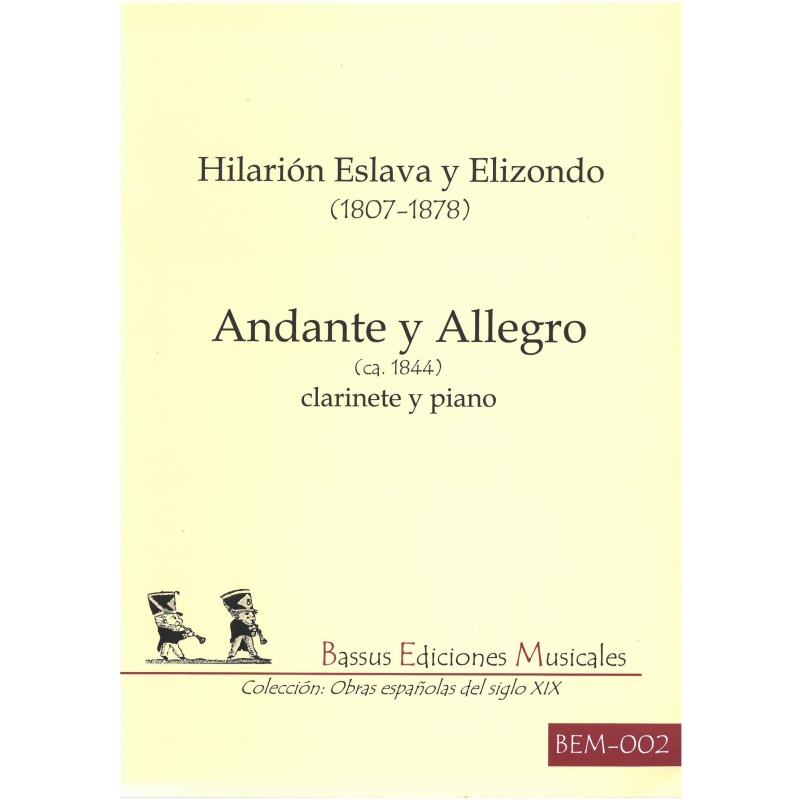



| Product Format | Sheet Music |
|---|
A single movement piece originally written for clarinet and orchestra, probably for auditions to the Royal Chapel in Madrid in 1844, by an experienced composer and teacher who was also a priest.
Elizondo began his musical career as a nine year old chorister at the Cathedral of Pamplona, the provincial capital of Navarre in Spain. His musical education progressed while he was training for the priesthood so that he was ordained in 1832 at about the same time as he was appointed Master of the Chapel of the Cathedral of Seville. During his twelve years there Elizondo composed the bulk of his work, most of it liturgical, and succeeded as a teacher, publishing his 'Método de Solfeo'. Low pay drove him to diversify and his three operas composed between 1841 and 1843 were well received in Madrid, but opposition from the Church authorities ended his operatic career and he was appointed Master of the Royal Chapel in Madrid in 1847. There he staid for the rest of his life, combining his Chapel duties with the posts of Professor of Composition and Director of the Royal Conservatory of Music, and composing to add to his catalogue of some one hundred and fifty mainly religious works. But he did write some 'profane' instrumental music in addition to his operas, including the 'Andante y Allegro'.
The manuscript of Andante y Allegro for clarinet and piano is undated. It is thought to have been written as an audition piece for candidates to join the ensemble of the Royal Chapel in Madrid. Elizondo is known to have been associated with the Chapel from as early as 1844 and it could well be that his piece was written for the auditions that year which were won by Antonio Romero. The original is scored for clarinet and string orchestra and was transcribed for clarinet and piano by Pedro Rubio and Ana Benavides to a single movement piece of 103 bars. It starts Andante which continues to the end of bar 34 where there is a change of key and time signature, and then Allegro con brio to the end via four changes of tempo.